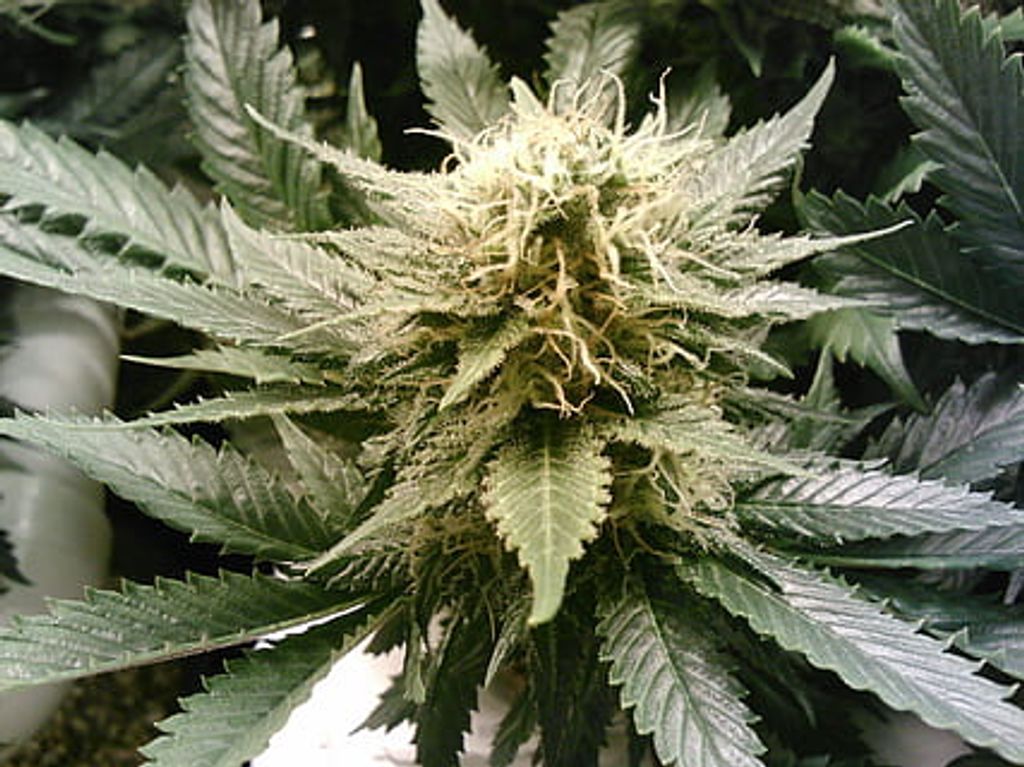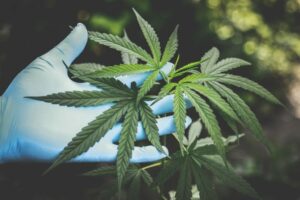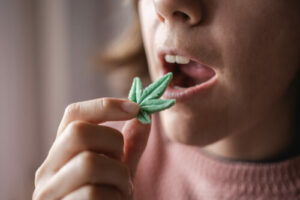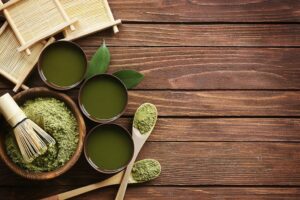Before legalization, the marijuana market was radically different. But one aspect leftover from the black market days is the different sizes. Maybe you heard of a character in a TV show or one of your friends talking about an
“eighth” of weed without understanding how much it is. The eighth is the best-selling amount in dispensaries, and it’s also the standard in informal transactions. Let’s look at how much it weighs, how far it will go, and how much it might cost.
Key Takeaways
- An eighth of weed equals 3.5 grams of marijuana.
- The eighth is the best-selling amount in dispensaries and is also the standard in informal transactions.
- Understanding weed measurements is key to making informed purchases.
The Science Behind Cannabis Potency

Factors Affecting Cannabis Potency
When you’re trying to understand the potency of an eighth of weed, it’s crucial to consider the various factors that influence it. The potency of cannabis is not just about the strain; it’s a complex interplay of several elements. Genetics play a pivotal role, as they determine the maximum potential of THC and CBD levels a plant can produce. However, environmental conditions such as light, temperature, and humidity can significantly impact the final potency. For instance, inadequate light can lead to lower THC levels, while too much heat can degrade THC into CBN, leading to a less psychoactive effect.
Another key factor is the cultivation process. The methods used to grow, harvest, and cure cannabis can either preserve or diminish its potency. Proper curing, for example, can enhance the overall cannabinoid profile, while improper drying can result in the loss of terpenes, which are essential for the plant’s aroma and flavor. Additionally, the age of the cannabis and the method of storage can affect potency; older cannabis or that which is not stored correctly may see a degradation in quality.
Lastly, the process of decarboxylation, which activates THC, is crucial. If not done correctly, it can lead to a significant loss of potency. To maintain the integrity of cannabinoids and terpenes, it’s important to decarboxylate at the right temperature and for the correct duration. Here’s a brief list of factors to keep in mind:
- Genetics of the cannabis plant
- Environmental conditions (light, temperature, humidity)
- Cultivation methods (growing, harvesting, curing)
- Age and storage of the cannabis
- Decarboxylation process (temperature and time)
Understanding THC and CBD
When you delve into the world of cannabis, two acronyms you’ll frequently encounter are THC and CBD. THC, or tetrahydrocannabinol, is the primary psychoactive component in cannabis that is responsible for the ‘high’ sensation. CBD, or cannabidiol, is non-psychoactive and is often associated with the therapeutic aspects of cannabis use.
The transformation from a non-psychoactive state to a psychoactive one occurs through a process called decarboxylation. This is a critical step to activate the psychoactive properties of cannabinoids present in the plant. Raw cannabis contains THCA (tetrahydrocannabinolic acid) and CBDA (cannabidiolic acid), which are the precursors to THC and CBD. By applying heat, such as when smoking, vaporizing, or cooking, you remove a carboxyl group from these acids, converting them into their active forms that can interact with your endocannabinoid system.
Understanding the difference between THC and CBD is essential for consumers to make informed choices about their cannabis use. Here’s a simple breakdown:
- THC is associated with the euphoric effects of cannabis.
- CBD is known for its potential health benefits without causing a high.
It’s important to note that the potency and effects of THC and CBD can vary based on the strain and method of consumption.
Measuring Cannabis Potency
Weighing weed is a bit of a mixed bag—unless you’re equally fluent in both the largely universal metric system and the imperial approach used in the United States. While the world debates the values and benefits of using imperial versus metric, cannabis decided to approach it uniquely by combining both, introducing global consumers to one of the most confusing measurement systems. Although measurements of weed can be comically confounding, the industry is at least consistent in its chaotic approach. The eighth you buy in a Los Angeles dispensary will be the same eighth you buy at a Dispensary in Denver, and vice versa—at least when it comes to weight and size. However, even if you’re familiar with the metric and imperial measurements, you’re still not quite out of the newbie woods yet. The cannabis community has developed nicknames for each measurement in question, leftover from the legacy days of operating discreetly and still popularly utilized today. Being able to understand the size of your eighth, all it takes is purchasing a little at-home scale to confirm whether or not your budtender rounded up a little too generously. But what if your eighth checks out weight-wise and you’re left wondering whether or not the strain itself is as “high-quality” as the dispensary claimed? This is where plant compound knowledge comes in handy and helps you understand how to pick out exemplary products without having to ask a budtender. Familiarizing yourself with the profiles of cannabinoids, terpenes, and trichomes—and how they should present themselves in quality flower—will enable
Frequently Asked Questions
How can you stretch an 8th of weed?
There are several ways to stretch an 8th of weed, including using a smaller amount per session, using a pipe or bong instead of rolling joints, and avoiding wastage by properly storing the weed in an airtight container.
How do you store an 8th of weed?
To store an 8th of weed, use an airtight glass jar or a sealed plastic bag to maintain its freshness and potency. Store it in a cool, dark place away from direct sunlight and heat.
How many joints can you roll with an 8th of weed?
On average, you can roll approximately 7-10 joints with an 8th of weed, depending on the size of the joints and the amount of weed used in each.
- SEO Powered Content & PR Distribution. Get Amplified Today.
- PlatoData.Network Vertical Generative Ai. Empower Yourself. Access Here.
- PlatoAiStream. Web3 Intelligence. Knowledge Amplified. Access Here.
- PlatoESG. Carbon, CleanTech, Energy, Environment, Solar, Waste Management. Access Here.
- PlatoHealth. Biotech and Clinical Trials Intelligence. Access Here.
- Source: https://greencamp.com/understanding-an-eighth-of-weed-everything-you-should-know/
- :has
- :is
- :not
- :where
- $UP
- 8th
- a
- Able
- About
- Acronyms
- activate
- active
- Additionally
- affect
- affecting
- age
- All
- also
- Although
- amount
- an
- and
- Angeles
- Applying
- approach
- approximately
- ARE
- AS
- ask
- aspect
- associated
- At
- author
- average
- avoiding
- away
- bag
- based
- BE
- behind
- being
- benefits
- between
- Bit
- Black
- both
- Breakdown
- but
- buy
- by
- called
- CAN
- Cannabidiol
- Cannabinoid
- cannabis
- card
- causing
- cbd
- cbn
- character
- Checks
- choices
- claimed
- combining
- comes
- community
- complex
- component
- Compound
- conditions
- Confirm
- confusing
- Consider
- consistent
- Consumers
- consumption
- Container
- contains
- content
- converting
- cooking
- Cool
- correct
- correctly
- Cost
- critical
- crucial
- cure
- curing
- Dark
- Days
- debates
- decided
- delve
- Denver
- Depending
- Determine
- developed
- difference
- different
- direct
- dispensaries
- do
- done
- duration
- each
- effect
- effects
- Eighth
- either
- elements
- embedded
- encounter
- enhance
- environmental
- equally
- Equals
- essential
- Even
- everything
- example
- factor
- factors
- familiar
- far
- final
- flavor
- For
- For Consumers
- forms
- frequently
- friends
- from
- generously
- glass
- Global
- Go
- Grams
- Greencamp
- Group
- Grow
- Growing
- handy
- harvest
- Harvesting
- having
- Health
- heard
- helps
- High
- How
- How To
- However
- HTTPS
- if
- Impact
- Imperial
- important
- in
- Including
- industry
- influence
- informal
- informed
- instance
- instead
- integrity
- interact
- into
- introducing
- IT
- ITS
- itself
- just
- Keep
- Key
- key factor
- Know
- knowledge
- known
- largely
- lead
- leading
- least
- left
- Leftover
- Legacy
- legalization
- less
- levels
- light
- LINK
- List
- little
- Look
- los
- Los Angeles
- loss
- lower
- maintain
- make
- Making
- many
- marijuana
- Market
- maximum
- May..
- maybe
- measurement
- measurements
- method
- methods
- metric
- might
- mind
- mixed
- most
- much
- non-psychoactive
- note
- of
- often
- older
- on
- ONE
- operating
- or
- out
- overall
- per
- pick
- pipe
- pivotal
- Place
- plant
- plastic
- plato
- Plato Data Intelligence
- PlatoData
- Play
- potency
- potential
- present
- primary
- process
- produce
- Products
- Profile
- Profiles
- proper
- properly
- properties
- purchases
- purchasing
- quality
- question
- quite
- radically
- Raw
- remove
- responsible
- result
- right
- Role
- Roll
- Rolling
- ROW
- same
- Scale
- Science
- see
- session
- several
- should
- show
- significant
- significantly
- Simple
- Size
- sizes
- smaller
- Smoking
- standard
- State
- States
- Step
- Still
- storage
- store
- stored
- such
- sunlight
- system
- Systems
- takes
- talking
- tetrahydrocannabinol
- that
- THC
- The
- the world
- their
- Them
- themselves
- These
- they
- this
- Through
- time
- to
- today
- too
- Transactions
- Transformation
- trying
- tv
- tv show
- two
- understand
- understanding
- uniquely
- United
- United States
- Universal
- use
- used
- using
- utilized
- Values
- various
- vary
- Versus
- vice
- was
- ways
- weed
- weighs
- weight
- What
- when
- whether
- which
- while
- will
- with
- without
- wondering
- Woods
- world
- yet
- you
- Your
- yourself
- youtube
- zephyrnet











